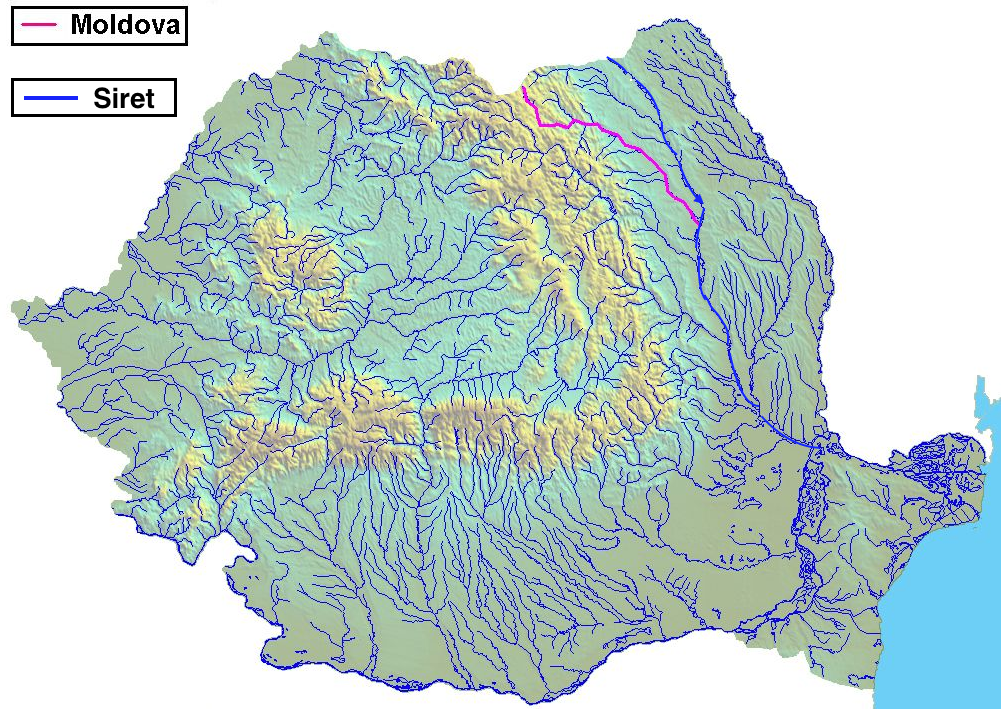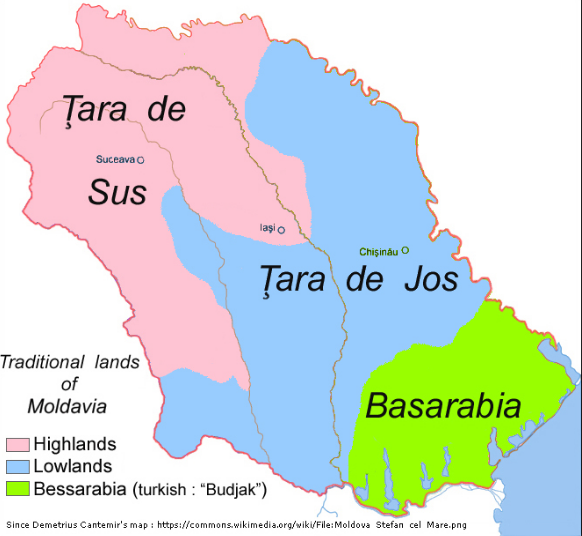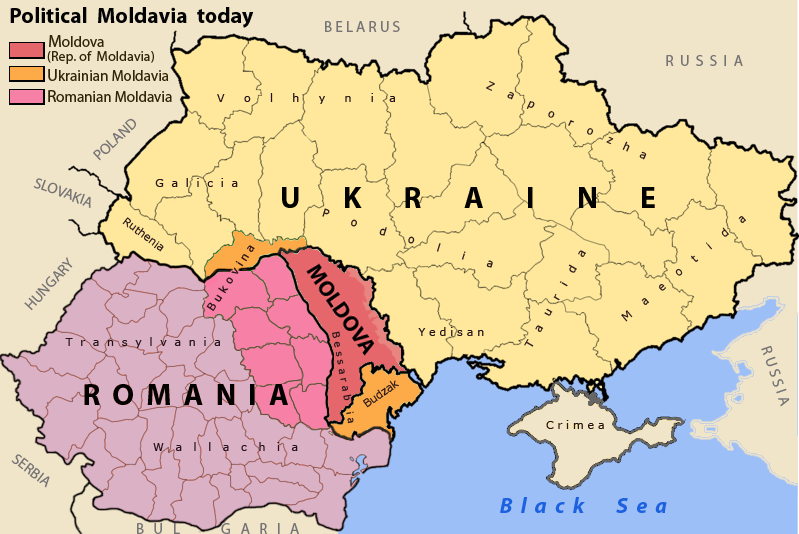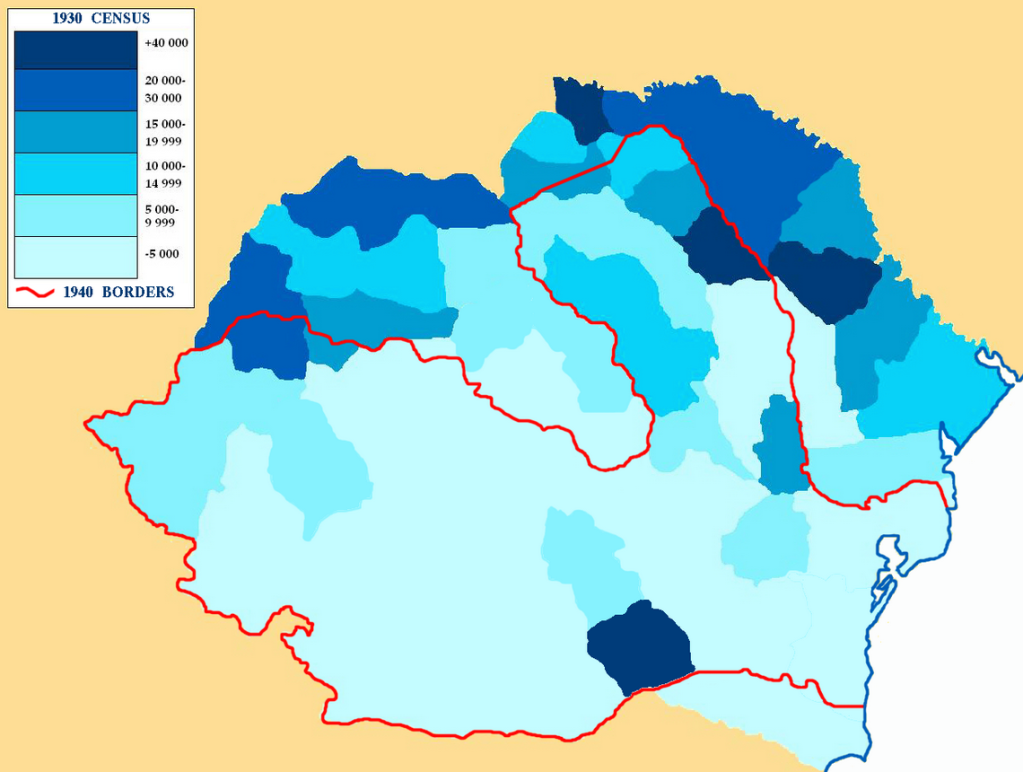Briefly – Romanian history and culture
Romania is a mountain range surrounded by plains. Its outer borders have often fluctuated subject to invasion – from the East, South, or Northwest, and when invaded Its inhabitants have “headed for the hills”. Thus the most dependable source of food has been the sheep and goats Romanians take with them up and down the mountains, feeding and eating on the way. To other Europeans, Romanians have mostly been known as Vlachs, (“Wlachs”, or “Wallachians”, from the German word for “other”). To non-Romanians, “Vlach” equals “shepherd”. Most invaders ruled Romanian-speaking peoples from their seat of power far away, so Vlachs/Romanians have always managed to be the majority population in their homeland; Romanian has been the language of the majority no matter who ruled.


Below is a brief history of Romania, showing how its geography has shaped the cultural influences of its 3 main regions.
About Moldova
Moldavia is a term more often used by English-speaking people – to help us distinguish Romanian Moldova from the Republic of Moldova – formerly in the Soviet Union. Romanian speakers call the entire region Moldova (green in the map below), because to them both Moldova’s, plus Bucovina and a portion of Ukraine (light green, below right) have constituted the historical region of Moldova for over 500 years.

East of Romania is the vast prairie of Ukraine, source of invasion by Scythians, Mongols, Tartars, Rus (Vikings), Poles, Lithuanians, Russians, etc.

The Moldova River starts in the Carpathians and flows into the river Siret. It is hardly the largest river in the region, but it gave the region it’s name when in 1359 its valley coalesced into a centre of power – calling itself the Principality of Moldova (Moldavia). As a principality, Moldavia was a semi-independent state from the 1300’s until 1859. Moldova’s semi-independence was always subject to the influence or outright control of more powerful nations from all directions. During this period, the most powerful states were Poland and Hungary.
By 1483 the Principality of Moldavia had expanded east to the Dniester River and south to the Black Sea. Its capital was moved from Suceava to Iași (Jassy) in 1565.


By the mid-1400’s the Ottoman Empire controlled all lands south and west, and might have conquered Romania including Moldova outright. Instead they preferred to keep compliant local rulers in place so long as they remitted the severe taxes demanded by the Ottomans. That policy stood until 1711. By then the Russian and Habsburg Empires had grown strong enough to threaten the Ottomans near Romania. When a Romanian prince sided with the Russians against his Ottoman overlords and lost, the Ottomans decided Romanian princes could no longer be trusted and began ruling directly from Istanbul. They installed government-appointed administrators (tax farmers, really) who came mostly from the Phanariots, a class of Greek merchants from Istanbul who ran the Ottomans’ business affairs. Though Western-educated with progressive ideals, the Phanariots bought their positions from the Ottomans, then tried to recoup their costs plus profits from their Romanian subjects. The result was some reform, much corruption and no respect.

From 1848 Moldova and Wallachia were in continual upheaval. In 1859 the Principalities of Moldavia and Wallachia elected the same person a ruler, thus technically uniting the region. In 1878 Romanians fought alongside Russians to expel the Ottomans for good and establish the Kingdom of Romania. The price of Russian help was the official annexation of Bessarabia into Russian territory. For a summary of Romania’s MANY border changes over the last 150 years, click https://en.wikipedia.org/wiki/Territorial_evolution_of_Romania which includes an animated map.


Ethnic Moldova
Although it seems Greater Moldova has ‘always’ had a large majority of Romanian speakers, each region has also had a significant number of other ethnicities.
Gagauz, Tatars
Various Turkic-speaking peoples have been settling or invading the plains of Romania for as long as people have been riding horses.
Among the earliest were the Bulgars of the 7th century, a Turkic tribe that migrated from the Pontic-Caspian steppe through the Black Sea coast of Moldova before taking control of what is now Bulgaria. The Gagauz consider themselves descendants of the Bulgars. For more on the Gagauz, click here.

The most significant incursion was by Gengis Khan’s Golden Horde on their way to Hungary in 1241. The Horde consisted of Mongols plus various Turkic-speaking tribes, known collectively by outsiders as Tatars.
Wikipedia says Tatar is a term for “All Turkic peoples living within the Russian Empire…. Some of these populations still use Tatar as a self-designation, others do not…. Eventually, however, the name became associated with the Turkic Muslims of Ukraine and Russia, namely the descendants of Muslim Volga Bulgars, Kipchaks, Cumans and Turkicized Mongols or Turko-Mongols (Nogais), as well as other Turkic-speaking peoples (Siberian Tatars, Qasim Tatars and Mishar Tatars.” Many Tatars settled in Budjak, the southernmost part of Moldova, also known for being the original region of Bessarabia.

Roma (Gypsies)
It is now commonly accepted that the Roma first arrived in Moldova as slaves. Selectively quoting from a larger article in Wikipedia: “Slavery existed on the territory of present-day Romania from before the founding of the principalities of Wallachia and Moldavia in 13th–14th century, until it was abolished in stages during the 1840s and 1850s, …. Most of the slaves were Roma. Particularly in Moldavia there were also slaves of Tatar ethnicity, probably prisoners captured from the wars with the Nogai and Crimean Tatars.
The slaves were owned by the boyars, the Christian Orthodox monasteries, or the state. Initially, they were used only as smiths, gold panners and as agricultural workers, but when the principalities became more urbanized, increasingly more of them were used as domestic workers…..The Roma slaves were not included in the tax censuses and as such, there are no reliable statistics about them, the exception being the slaves owned by the state. Nevertheless, there were several 19th century estimates. According to Djuvara, the estimates for the slave population tended to gravitate around 150,000-200,000 persons, which he notes was equivalent to 10% of the two countries’ population….
The Romanian abolitionists debated on the future of the former slaves both before and after the laws were passed. This issue became interconnected with the “peasantry issue”, an important goal being eliminating the corvée and turning bondsmen into small landowners. The Ursari (nomadic bear handlers) were the most reticent to the idea of settling down because they saw settling down as becoming slaves again on the owner of the land where they settled. The abolitionists themselves saw turning the former slaves into bondsmen as not something desirable, as they were bound to become dependent again. Nevertheless, the dispute ended after the Romanian Principalities adopted a liberal capitalist property legislation, the corvée being eliminated and the land being divided between the former boyars and the peasants.
The abolition of slavery was carried out following a campaign by young revolutionaries who embraced the liberal ideas of the Enlightenment. Notable among them was Mihail Kogălniceanu, who drafted the legislation related to the abolition of slavery in Moldavia. In 1843, the Wallachian state freed the slaves it owned and by 1856, in both principalities, all the categories of slaves had been freed.
Following the abolition, there were attempts (both of the state and private initiatives) to sedentize the nomads and to integrate the Roma people into the Romanian society, but they had a rather limited success. Despite the good will of many abolitionists, the social integration of the former slaves was carried out only for a part of them, many of the Roma remaining outside the social organization of the Wallachian, Moldavian and later, Romanian society.”
Jews
From the YIVO Encyclopedia “Hebrew sources from the sixteenth to the eighteenth centuries designate Moldavia as Valakhyah ha-Ketanah (Small Walachia). Jewish merchants traversed the region continually from the end of the twelfth century, plying routes linking Byzantium, Russia, and Poland. A Jewish settlement, possibly Karaite, is attested in the Black Sea port Cetatea Albă (Licostomo or Akkerman, now Belgorod-Dnestrovsky in Ukraine) in the first half of the fourteenth century; Karaite settlements existed there later, until the middle of the eighteenth century. A Jewish presence is attested in Suceava, the capital, at the end of the fifteenth century…….
….The number of Jews in Moldavia was augmented in the middle of the seventeenth century by refugees from the attacks led by Bogdan Khmel’nyts’kyi (gzeyres takh vetat). In the last decades of the seventeenth century and the beginning of the eighteenth, a new Jewish occupation appeared: the leaseholder. Jews held leases on tolls, taverns, inns, lakes, and later of estates. Other Jews worked in international and domestic commerce, crafts, and moneylending. By the beginning of the eighteenth century, there were Jewish communities in Iaşi, Suceava, Baia, Siret, Dorohoi, Botoşani, Ştefăneşti, Piatra Neamț, Târgu Neamț, Bârlad, Focşani, Galați, Bacău, Cernăuți, Hotin, Soroca, Chilia, Cetatea Albă, Chişinău, and other towns. The first privilege (hrisov) granted to the Jews of Iaşi was in 1622, and it was reissued in 1666. Mentioned therein are the rights and obligations of the resident Jews. Jews were settled in a special quarter, owned land for a cemetery, had the right to build a synagogue, and were obligated to pay a poll tax. Probably Jews who settled in other towns had similar rights and obligations…..
….With the exception of several accusations of ritual murder such as in 1710 (in Târgu Neamț) and in 1726 (in Onițcani), the eighteenth century was a relatively quiet period for Jews. Their numbers increased after 1774 (with the Russian–Turkish peace treaty of Kuciuk-Kainargi) and especially after 1829 (with the Russian–Turkish peace treaty of Adrianople), a time in which local merchants had relatively free access to European and Russian markets, and the new conditions attracted immigrants from Galicia and later from Russia…..
In this period, estate owners founded commercial small towns and accorded the right of settlement to Jews immigrating to Moldavia from Galicia and Bucovina, and later from Russia. In the territory of Moldavia between the Prut River and the Carpathian Mountains, 11 such towns were established between 1780 and 1820; 11 more between 1820 and 1831; and 44 between 1831 and 1859. Jewish inhabitants engaged chiefly in small commerce and crafts. The main occupations of Jews living in the large old towns were crafts, although many were involved in commerce. Jewish craftsmen organized themselves in professional associations or guilds, each led by a staroste, maintaining a register (pinkas), and in many cases, a synagogue. These guilds continued to exist until the 1860s.
The anti-Ottoman Greek revolt of 1821 (Eteria) caused much suffering to the Jews of Moldavia. Crossing the principality, the eterists molested Jews in order to steal their money. They also confused Jews with Turks, since in some towns the populations lived in the same quarters. Many Jews were killed…..In 1803, some 15,000 Jewish taxpayers lived in Moldavia (excluding Bessarabia). In 1824 to 1825, there were 824 foreign Jewish families living in Moldavia. In 1831, of 38,039 Jews in Moldavia, 31,839 lived in towns. In 1845, 17,089 Jewish families (85,435 persons) lived in towns (the total for all of Moldavia is not available)….
.…In the first half of the nineteenth century, most Moldavian Jews were Hasidim….Relations between Jews, church, and state were good, with some exceptions: accusations of ritual murder in the towns of Piatra Neamț, Roman, Galați, Iaşi, and Bacău; and the publication of an anti-Jewish pamphlet Infruntarea jidovilor asupra legii şi a obiceiurilor lor (Confronting the Jews Concerning Their Laws and Customs), written by the monk Neofit, a converted Jew (Iaşi, 1803). Jews who converted to Orthodox Christianity were granted high positions, gifts, and exemptions from taxes. Prince Mihail Sturdza’s attempt to expel Jews without legal rights to settlement was canceled by himself, after the banker Yeḥi’el Mikhl ben Dani’el—a communal leader and Hasid—forgave the prince’s debts. In the period of the liberal prince Alexandru Ioan Cuza (1859–1866), who unified the Danubian principalities of Moldavia and Walachia, Jewish hopes for emancipation were disappointed. In 1859, the year of the political union of the principalities, the Jewish population of Moldavia numbered 118,922.
The Holocaust
Selected excerpts from https://en.wikipedia.org/wiki/History_of_the_Jews_in_Moldova:
- 1930: Romanian census registers 270,000 Jews
- Up to two-thirds of Bessarabian Jews fled before the retreat of the Soviet troops. 110,033 people from Bessarabia and Bukovina (the latter included at the time the counties of Cernăuţi, Storojineţ, Rădăuţi, Suceava, Câmpulung, and Dorohoi – approximately 100,000 Jews) – all except a small minority of the Jews that did not flee in 1941 – were deported to the Transnistria Governorate, a region which was under Romanian military control during 1941–44.
- 1941: The Einsatzkommandos, German mobile killing units drawn from the Nazi-Schutzstaffel (SS) and commanded by Otto Ohlendorf entered Bessarabia. They were instrumental in the massacre of many Jews in Bessarabia, who did not flee in face of the German advancement.
- The killing squads of Einsatzgruppe D, together with special non-military units attached to the German Wehrmacht and the Romanian army were involved in many massacres in Bessarabia (over 10,000 in a single month of war, in June–July 1941), while deporting other thousands to Transnistria.
- After World War II, the number of Jews in Moldavian Soviet Socialist Republic increased significantly, peaking at 98,001 in 1970. During the 1970s Soviet Union aliyah and immigration to the West and especially in the late 1980s, many of them emigrated to Israel, United States, Canada and some to Australia and Western Europe. The last Soviet census of 1989 registered 65,672 Jews in the Soviet Republic

CULTURE
Moldavians v Wallachians vs. Transylvanians
Question in Quora “In today’s Romania, do people refer to themselves as Moldavians, Wallachians and Transylvanians?
Andrei Istrate, I live in Romania Answered August 18, 2018
“Yes, in certain contexts people will identify with a certain region but this is not limited to the three mentioned above.
Wallachia is usually divided into Muntenia and Oltenia, with those living in the first being munteni and in the latter olteni.
Transylvania similarly contains the macro-regions of Maramures and Banat, and people hailing from these parts identify as maramureșeni and banațeni.
On top of this many people will identify with their județ (county), so those from Constanța, Brăila and Cluj will identify as constănțeni, brăileni and clujeni.
And finally, Romanians will also identify with their particular city, town or village. Those from the capital Bucharest will be bucureșteni while those haling from the village of Pildești will be pildeșteni.
So identities based on historical regions do exist but they’re just a slice of a larger regional identity.”
An opinion by Tudor Florescu, lives in Romania, Answered April 13, 2018
“Yes, there are some marked differences between people from the three historical regions of Romania. People from Moldavia have been culturally influenced by Slavic culture more than the rest of the country, which is also reflected in their specific pronunciation and vocabulary. Moldavia has also been one of the poorest parts of the country, with the highest percentage of the active population working in agriculture. Moldavians tend to be temperamentally more similar to Slavs, in that they are more lively and enthusiastic than other Romanians.
On the other hand, Wallachs are seen as more calculated, ironic and tricky types than Moldavians and Transylvanians. Historically, Wallachia has been the richest and most urbanised region of Romania, mostly thanks to the influence of the capital city, Bucharest.
Transylvania has been, for centuries, under the influence of Central European culture and Catholicism, which shaped a culture that is markedly distinct from the culture of other Romanian regions. As a result of this influence, Transylvania has experienced a high degree of industrialisation, second only to Wallachia, which is also reflected in their people’s work ethic. Transylvanians like to think of themselves as honest and hard-working types and some of them even believe in this stereotype which makes them mistrust what they think is typical Wallachian cunningness and deceptiveness.
But these are just stereotypes, you are more likely to find very similar people in each region, than people that match these stereotypes closely.”
